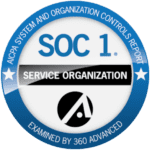Logistics planning is the strategic management of goods, information and other resources to guarantee a smooth supply chain. Effective planning can help businesses cut costs, boost productivity and improve customer satisfaction. In this guide, we’ll examine key elements of logistics planning, as well as offer tips on creating an effective logistics plan.
- Define Your Objectives
The initial step in logistics planning is to define your objectives. This involves deciding what you hope to accomplish through your logistics operations, such as cutting costs, improving delivery times or increasing customer satisfaction. By specifying these goals, you can create a plan tailored specifically to your individual needs and goals.
Planning logistics is like planning a road trip. Before you hit the road, you need to decide your destination (objectives). Are you aiming to reach a certain city (cutting costs), visit multiple attractions (improving delivery times), or have a smooth, enjoyable journey (increasing customer satisfaction)? Defining your goals helps you map out the best route to take.
- Analyzing Your Supply Chain
The next step is to assess your supply chain. This involves mapping out every link along the way – suppliers, manufacturers, distributors and customers included – to identify areas for improvement and create strategies to streamline logistics operations.
Just as you would map out your route, pit stops, and places to refuel on a road trip, analyzing your supply chain involves mapping out every link along the way—suppliers, manufacturers, distributors, and customers. This helps you identify the best places to streamline operations, much like choosing the best highways and rest stops for a smoother journey.
- Select the Appropriate Transportation Mode
Selecting the correct transportation mode is a critical element of logistics planning. Your decision will depend on factors such as what you’re shipping, its distance and urgency for delivery. Common modes include road, rail, air and sea.
Choosing the right transportation mode is like choosing your vehicle for the road trip. Depending on the distance, speed, and cargo (what you’re shipping), you might choose a car, an RV, or even a plane. Similarly, in logistics, you decide whether road, rail, air, or sea transportation best suits your needs.
- Optimize Your Inventory Management Effectively
Inventory management is an integral component of logistics planning. Effective inventory management can help reduce costs by eliminating excess stocks and stock-outs. To achieve optimal results, you need a thorough understanding of your demand patterns and lead times.
Effective inventory management is akin to packing efficiently for the trip. You don’t want to overpack and run out of space (excess stocks) or forget essential items (stock-outs). Understanding your demand patterns and lead times helps you pack just the right amount for a smooth journey.Need help?
- Implement Technology Solutions
Implementing technology solutions can streamline your logistic operations and boost efficiency. Systems such as warehouse management systems (WMS), transportation insight TMS, and enterprise resource planning software can automate processes, reduce errors and enhance visibility throughout your supply chain.
Using technology solutions in logistics is like using GPS and travel apps during your road trip. Warehouse management systems (WMS), transportation management systems (TMS), and enterprise resource planning software guide you, providing real-time updates and helping you avoid wrong turns, ensuring an efficient trip.
- Monitor Your Performance
The final step is to monitor your progress. By tracking key performance indicators (KPIs) like delivery times, inventory levels, and transportation costs, you can identify areas for improvement and adjust your logistics plan as necessary.
Monitoring performance in logistics is similar to keeping an eye on your car’s fuel gauge, speedometer, and GPS while driving. By tracking key performance indicators (KPIs) like delivery times, inventory levels, and transportation costs, you can identify when to make adjustments to stay on course.
Effective planning is essential for businesses that strive to optimize their supply chain operations. By following the steps outlined in this guide, you can craft a logistics plan tailored to your individual needs and goals that will reduce costs, boost productivity, and enhance customer satisfaction.
Start your logistics planning journey now, and take your supply chain operations to new heights!
Frequently Asked Questions:
What is logistics planning?
It’s the discipline of strategically managing the flow of goods, information, and other resources to guarantee a streamlined supply chain.
Why is it essential?
It’s essential for businesses, as it helps them reduce expenses, boost productivity and improve customer satisfaction through optimized supply chain operations.
What are the essential elements of logistics planning?
Essential elements include: setting objectives, analyzing the supply chain, selecting an optimal transportation mode, optimizing inventory management processes, implementing technology solutions and monitoring performance indicators.
How do I craft an effective logistics plan?
You can create an effective logistics plan by outlining your objectives, analyzing your supply chain, selecting the optimal transportation mode, optimizing inventory management, implementing technology solutions and monitoring performance.
What are some common transportation modes used in logistics planning?
Common transportation modes include road, rail, air, and sea.
How can I optimize my inventory management with a logistics plan?
Optimizing inventory management requires an in-depth understanding of demand patterns and lead times, as well as using inventory management software and other tools to reduce excess stock and avoid stock-outs.
What technology solutions can be utilized for logistics planning?
Technology solutions like warehouse management systems (WMS), transportation management systems (TMS), and enterprise resource planning (ERP) software.
How can I measure my performance in logistics planning?
You can evaluate your performance in logistics planning by monitoring key performance indicators (KPIs), such as delivery times, inventory levels and transportation costs.
What are some common challenges encountered during logistics planning?
Difficulties usually arise due to transportation delays, inventory management problems, supply chain interruptions and lack of visibility across the entire supply chain.
How can I overcome challenges in logistics planning?
To meet logistics planning challenges, you should have a contingency plan in place, use technology solutions for improved efficiency and visibility, and collaborate with trusted partners and suppliers for successful supply chain operations.
Need help with logistics planning? Contact one of our specialists today.




